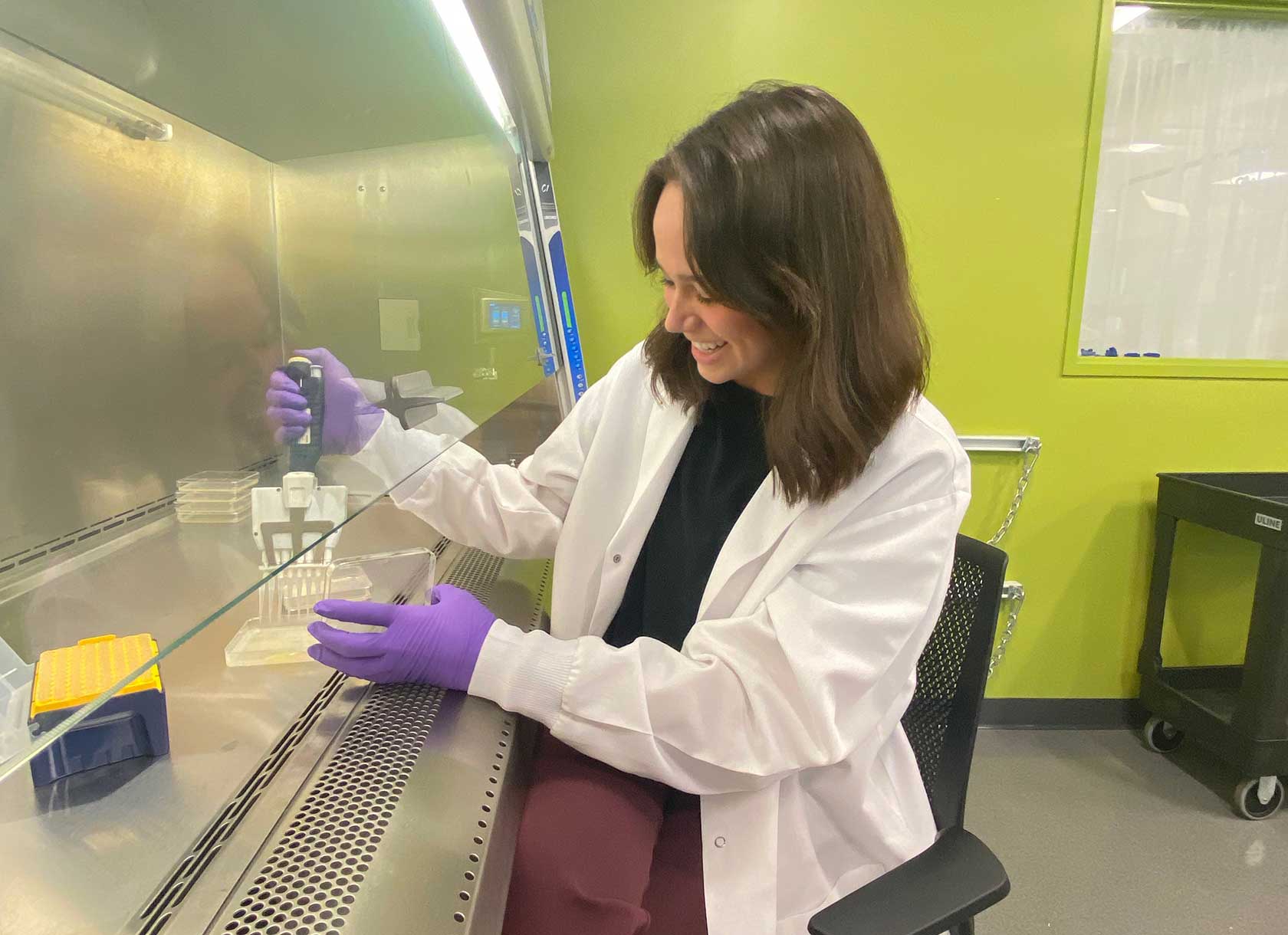By Ella Murdock Gardner ’22

Anna Bagley ’22 is using microbiology to address one of the major environmental concerns facing our planet: water pollution. Drinking water contaminated with heavy metals has been linked to a host of serious health issues, including cardiovascular disorders, neuronal damage, and risk of cancer and diabetes. As pollutants from industrial processes continue to seep into the environment worldwide, finding sustainable methods for purifying water is more crucial than ever.
Bagley is working with Assistant Professor of Biology Pete Chandrangsu to research poly-γ-glutamate (PGA), a shiny, gooey substance that bacteria secrete to protect themselves from heavy metals like copper and zinc. It’s a small polymer with major implications for ecology and public health worldwide. “Toxic heavy metals like zinc and copper run into the water supply all the time,” explains Bagley. “But you can actually use poly-γ-glutamate like a sponge to soak up those heavy metals and remove them from the water, kind of like a microbial Brita filter. Its biodegradable, non-toxic, and non-immunogenic, meaning it’s better overall for the water and the environment.”
Scientists have already proven the efficacy of PGA for cleaning up water. Unfortunately, because no one understands exactly how bacteria produce this substance, PGA’s applications are currently limited by the high cost of producing it. That’s where Bagley comes in: If she can discover the genomic mechanisms behind PGA, she can figure out how to produce more of it, making it a viable tool for bioremediation.
“Anna developed the research approach and designed the experiment fairly independently,” says Chandrangsu. “The fun thing about microbiology is that you get to use a wide range of techniques, from the old-school method of growing bacteria on petri dishes to ordering whole genome sequencing and using CRISPR to edit the bacterial genome. Anna is delving into genomic analysis and learning a number of these cutting-edge techniques.”
It isn’t Bagley’s first time tackling this problem. Over the course of her sophomore year, she worked with Chandrangsu to research the PGA genome. After a semester of research, the final experiment didn’t provide conclusive results. “Everyone working in the lab was really upset when that happened,” Bagley says. “But Professor Chandrangsu said, ‘You don’t call it re-search unless you have to re-do it every once in a while.’ So here we are!”
This summer, Bagley has returned to Chandrangsu’s lab to “jump into the deep end of genomic analysis,” as she says.
Their research approach is two pronged: First, Bagley is growing bacteria on agar plates and exposing them to higher and higher concentrations of zinc and copper. The samples that survive these heavy metal baths likely have mutations that cause them to produce more protective PGA. Thanks to funds from the Scripps Environmental Analysis grant, Bagley and Chandrangsu can order whole-genome sequencing, enabling them to pinpoint the tiny genetic mutations occurring in their sample bacteria. “We actually have two mutants right now that we’re about to send for whole-genome sequencing, which is really exciting,” says Bagley. “Then we’ll be able to tell which tiny mutations in the genome are causing that effect.”
The second method involves introducing transposons—pieces of DNA colloquially called “jumping genes”—into the bacteria. By inserting themselves into different parts of the genome, these transposons prevent various genes from expressing themselves, leaving Bagley and Chandrangsu with a veritable library of mutant bacteria. In this case, Bagley is interested in the samples that produce less PGA when exposed to copper and zinc; using genetic and biochemical techniques, she can work backward to identify which gene the transposon turned off, as it likely plays an important role in producing PGA.
Bagley is planning on writing her senior thesis about this research in the fall, and believes that the technical skills she’s practiced in the lab will prove invaluable after graduation; she hopes to enroll in medical school to become an OBGYN. The most valuable lesson, however, may have come from that failed experiment her sophomore year.
“I think one of my biggest takeaways from working in Professor Chandrangsu’s lab is that there’s always something you can learn when things go wrong,” she says. “The ability to evaluate problems and adapt is useful no matter where you go in life.”

